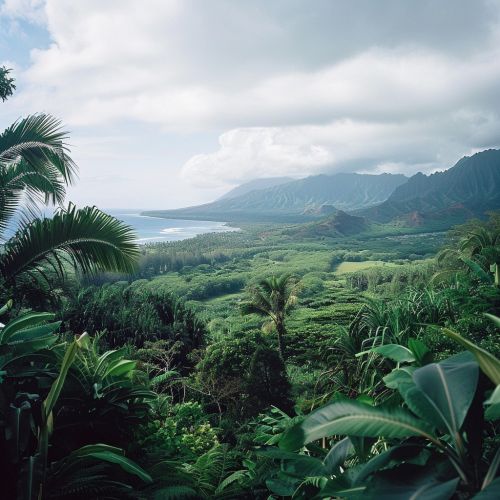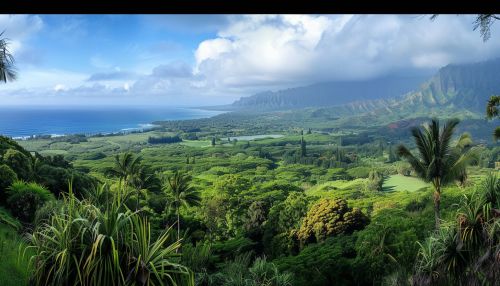Hawaii
Geography
Hawaii, the 50th state of the United States, is an archipelago located in the central Pacific Ocean. Comprising 137 islands spread over 1,500 miles, the state is known for its diverse landscapes, ranging from tropical rainforests and active volcanoes to sandy beaches and rugged cliffs. The eight main islands of the archipelago are Hawaii, Maui, Oahu, Kauai, Molokai, Lanai, Niihau, and Kahoolawe.


Geology
Hawaii's unique geography is the result of millions of years of geological activity, specifically volcanism. The islands were formed by the movement of the Pacific Plate over a hotspot in the Earth's mantle, causing magma to rise and create underwater volcanoes. Over time, these volcanoes erupted numerous times, with the hardened lava eventually forming the islands we see today. The most active of these volcanoes is Kilauea, located on Hawaii Island, which has been erupting continuously since 1983.
Climate
Hawaii's climate is classified as tropical, but it can vary considerably due to the islands' diverse topography. The islands experience warm temperatures throughout the year, with coastal areas being warmer than the mountainous regions. Rainfall is abundant, particularly on the windward sides of the islands, contributing to the lush vegetation found across the state.
Flora and Fauna
Hawaii is home to a rich diversity of flora and fauna, many of which are endemic to the islands. The state's isolation has led to the evolution of unique species, such as the Hawaiian honeycreeper birds and the Hawaiian silversword plant. However, the introduction of non-native species has resulted in significant ecological challenges, including the extinction of several native species.
History
The history of Hawaii is marked by early Polynesian settlement, European discovery, monarchy rule, and eventual U.S. annexation. The first settlers, the Polynesians, arrived around 300 CE, developing a complex society based on kapu (taboo) system. European contact began with the arrival of British explorer James Cook in 1778. In the late 19th century, the monarchy was overthrown, leading to U.S. annexation in 1898. Hawaii became a state in 1959.
Culture
Hawaiian culture is a blend of Native Hawaiian, Polynesian, Asian, and American influences. Traditional Hawaiian arts include hula dancing, luau feasts, and lei making. The Hawaiian language, once nearly extinct, has seen a resurgence in recent years, and is one of the state's two official languages, along with English.
Economy
Hawaii's economy is primarily based on tourism, defense, and agriculture. The state's natural beauty and warm climate attract millions of tourists each year. The military, particularly the U.S. Navy, has a significant presence in the state, especially on Oahu. Hawaii is also known for its agricultural products, including macadamia nuts, coffee, and pineapple.
